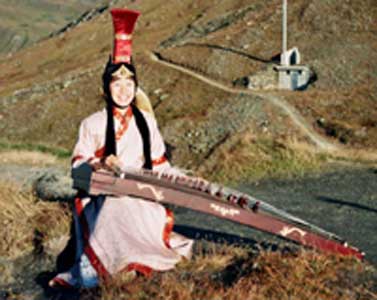 I am very nearly finished reading The Man Who Mistook His Wife for a Hat, and towards the end of it we're getting to the idiot savants. And there are these twins who relate to each other and the world using numbers. Not only that, but they recognize numbers and properties of numbers and can see numbers.
I am very nearly finished reading The Man Who Mistook His Wife for a Hat, and towards the end of it we're getting to the idiot savants. And there are these twins who relate to each other and the world using numbers. Not only that, but they recognize numbers and properties of numbers and can see numbers. For example - Oliver Sacks drops a box of matches, and the twins look at the mess and shout '111!' And then one of them also says '37-37-37.' So Oliver Sacks counts the matches as he picks them back up, and sure enough there are 111 of them. Why 37? There were also three 37s on the ground (37x3=111).
Later, Oliver Sacks also finds them sitting together trading numbers, and after each number they'll pause and savour it. He writes a couple down and looks them up later, and they're all prime. These 10- 11- 12- 20-digit numbers, all prime.
So how do people who can't add or even come close to understanding math just know prime numbers? Well, they say it's something like being able to recognize faces. Being able to recognize things as individual things, rather than as a sum of their parts.
I was thinking about this at my banjo lesson the other day as I asked the banjo teacher how I was supposed to know how the chord progression goes over the melody for Salt Creek other than just knowing it by the timing. And how was I supposed to know how and when to swap in the little fancy bits I have stuck in my head? What he said was essentially that music is a language and that, being new to it, I'm looking for rules and hard patterns. This is true, I am looking for rules and patterns, but what I need to do, he says, is just soak it all in. To just listen until I can hear it.
The first time I tried to play the chords over his melody, I got all tied up. I could barely even hear the melody - and I know this song. The notes just sounded like a big mess of floating individual pieces. He could tell I was struggling, so we played chords together a couple times then he let me at it again. And I wasn't even listening, but I heard it. Especially the F's. There was something warm and dark about them - even when they're played up the neck. You could just hear when they were coming. And the song sounded like a completely different song. It sounded like a quilt, like individual characters stitched together.
I've been similarly thinking about the impossibility of fretboards. How are you ever supposed to use that whole thing? There are so many frets on a banjo. How could they possibly all mean something to you? But I can feel that they're slowly starting to take on character. And that it's easier and easier to find them.
 Crazily, I don't usually have to watch my left hand to tell it what to do. I always watch my right hand. I don't always get the notes right, but I'm suprised at how close I get. And how I can sometimes play stuff with my eyes closed. It's like those Mongolian girls playing all up and down those giant lap harp things, knowing how to make them sing just so.
Crazily, I don't usually have to watch my left hand to tell it what to do. I always watch my right hand. I don't always get the notes right, but I'm suprised at how close I get. And how I can sometimes play stuff with my eyes closed. It's like those Mongolian girls playing all up and down those giant lap harp things, knowing how to make them sing just so.

1 comment:
Crazmazing. And what about fretless instruments? Where you have all of the notes and everything in between them!?! Crazy.
Post a Comment